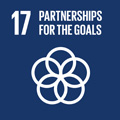- Docente: Matteo Casari
- Credits: 6
- SSD: L-ART/05
- Language: Italian
- Teaching Mode: Traditional lectures
- Campus: Bologna
- Corso: First cycle degree programme (L) in Drama, Art and Music Studies (cod. 5821)
-
from Mar 31, 2025 to May 07, 2025
Learning outcomes
By the end of the course the student: acquires general knowledge of Asian performative cultures and the main traditional genres of dance-theatre in Asia, putting them in the correct historical and anthropological context; knows how to identify and analyze the fundamental components, linking them to the belonging culture; learns the basic methodological tools to interpret and explain the performative and theatrical phenomena in Asia.
Course contents
The artificial body: the Asian scene between puppets and robots
In Asia, puppet theatre does not suffer any inferiority to actor's theatre. On the contrary, there are numerous cases in which the artificial bodies of puppets, to which robots have been added in recent years, have surpassed the flesh-and-blood bodies of human performers in audience preferences. The course will examine in depth, by means of a preliminary anthropological contextualization of Asian scenes, examples referred to those figure theatres who have influenced the theater of actors (especially in Japan and Southeastern Asia) with a look at performances with robots on stage.
Readings/Bibliography
-Cinzia Toscano, Il teatro dei robot. La meccanica delle emozioni nel Robot-Human Theatre di Hirata Oriza, CLUEB, Bologna, 2019.
-Paul Dumouchel, Luisa Damiano, Vivere con i robot. Saggio sull’empatia artificiale, Raffaello Cortina Editore, 2019.
-Lecture notes.
Not attending students will also have to prepare on a text chosen from:
-Azzaroni Giovanni, Sguardi sul corpo tra Oriente e Occidente. Studi di antropologia filosofica, Bologna, CLUEB, 2019.
-Azzaroni Giovanni, Teatro in Asia. Malaysia – Indonesia – Filippine – Giappone, vol. I, CLUEB, Bologna, 1998, solo pp. 273-388.
-Azzaroni Giovanni, Teatro in Asia. Myanmar – Thailandia – Laos – Kampuchea – Viêt Nam, vol. II, CLUEB, Bologna, 2000, solo pp. 273-388.
-Azzaroni Giovanni, Teatro in Asia. Tibet – Cina – Mongolia – Corea, vol. III, CLUEB, Bologna, 2003, solo pp. 101-256.
-Azzaroni Giovanni, Teatro in Asia. Nepal, Bhutan, India, Sri Lanka, vol. IV, CLUEB, Bologna, 2006, solo pp. 149-338.
-Matteo Casari, Teatro, vita di Mei Lanfang. Con la traduzione integrale di Addio mia concubina, CLUEB, Bologna, 2003.
Casari Matteo e de Concini Giuditta, a cura di, Danzare il Nāṭya. Permanenze e trasformazioni del teatro-danza indiano, in Arti della Performance: orizzonti e culture, n. 5, 2015, Alma Mater Studiorum - Università di Bologna, Dipartimento delle Arti e ALMADL, Bologna.
- De Giorgi Margherita, "To be renewed again". Esperienze di butō in Europa: Yvonne pouget, Imre Thormann e Xavier Le Roy, in Arti della Performance: orizonti e culture, n. 2, 2012, Alma Mater Studiorum - Università di Bologna, Dipartimento delle Arti e ALMADL, Bologna, solo pp.1-183.
-Di Bernardi Vito, Il Mahābhārata. L'epica indiana e lo spettacolo di Peter Brook, Bulzoni, Roma, 1989.
- Mastrangelo Matilde et al., a cura di, Il teatro giapponese. La macchina scenica tra spazi urbani e riforme, Roma, Aracne, 2014.
- Marazzi Antonio, Uomini, cyborg e robot umanoidi. Antropologia dell’uomo artificiale, Carocci, Roma, 2012.
- Ottaviani Gioia, I fondamenti del teatro in Asia, Aracne, Roma, 2004.
-Zeami Motokiyo, Il segreto del teatro nō, Adelphi, Milano, 1987 (o successive edizioni).
Teaching methods
The teaching will be a balanced mix of theoretical and practical examples, in anthropological context, in order to allow all students to be able to reach the final target.
Assessment methods
During the lessons the lecturer will involve the students in an active discussion of the lesson topics. The exchanges will be addressed to bringing out any difficulties concerning the subject matter, but not to actually forming part of the final mark.
The final exam will consist of an oral test. The exam will be the chance for the student to prove his/her knowledge of the course books. Students attending the class may refer their answers back to the topics actually analyzed in class.
Students studying the course set books, especially the core text, should pay attention to the fundamental aspects of the topics and, of course, to the ways in which they are connected to one another rather than to learn by rote.
The exame will take account of the propriety and the adequacy of oral linguistic expression:
30 cum laude: excellent performance showing soundness of knowledge, rich discursive articulation, appropriate expression, interest of critical contribution;
30: Excellent performance, complete, and appropriate knowledge, well-articulated and appropriately expressed, with interesting critical contributions;
29-27: Good performance, more than satisfactory knowledge, correct expression.
26-24: Standard performance, essential knowledge, but not comprehensive and / or not always correctly expressed;
23-21: Sufficient performance, general but superficial knowledge; often inappropriate expression and/or confused articulation of speech;
20-18: Poor performance, sufficient expression and articulation of speech with significant gaps;
<18: Insufficient performance, knowledge absent or very incomplete, lack of orientation in the discipline, poor and seriously flawed expression.
Students with SLD or temporary or permanent disabilities. It is suggested that they get in touch as soon as possible with the relevant University office (https://site.unibo.it/studenti-con-disabilita-e-dsa/en) and with the lecturer in order to seek together the most effective strategies for following the lessons and/or preparing for the examination.
Teaching tools
Performances videos relating to the topics presented during the course.
Office hours
See the website of Matteo Casari
SDGs



This teaching activity contributes to the achievement of the Sustainable Development Goals of the UN 2030 Agenda.
